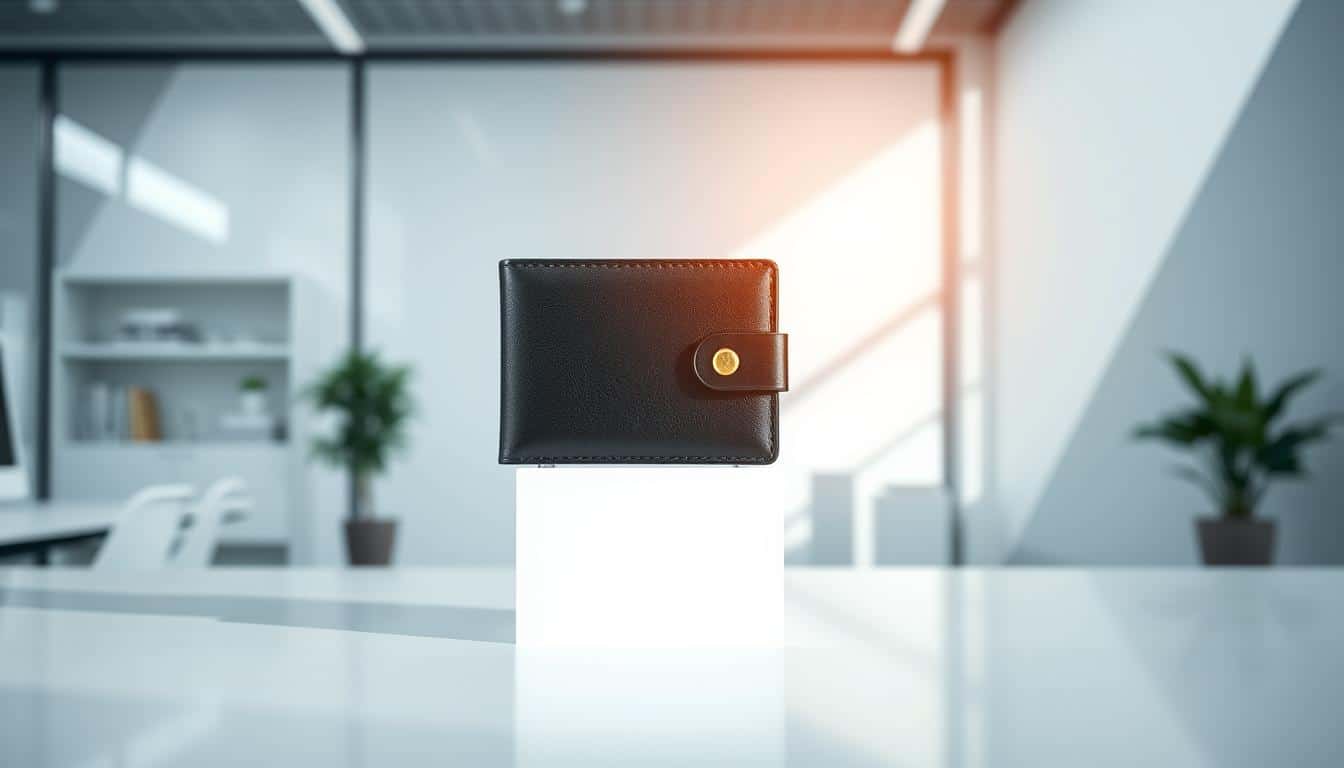In 2025, a surprising fact emerged: big transactions and institutional interests spiked Bitcoin’s trading volumes to around $66 billion in a day. This boom made many newcomers search for the safest ways to store their crypto. Through testing hardware, software, and mobile wallets amid these changes, I found a significant gap between ease of use and true safety that many guides don’t fully address.
In the U.S. this year, lots of fresh investors were drawn by big moves in the market and new offerings from the Solana ecosystem. This led to more ways to buy crypto but also more risks for newbies. I wrote this guide to highlight the safest crypto wallets for beginners, drawing from my own experiences to point out which offer the best mix of security and user-friendliness.
I looked into wallets from Trezor and Ledger, and used Coinbase Wallet and Trust Wallet on a daily basis. I also checked out new cloud services and options from third parties to identify possible risks. To support my suggestions, I gathered facts and figures from CoinDesk, CoinTelegraph, Arkham Intelligence, and reports from exchanges.
Key Takeaways
- You’ll learn which top-rated wallets for beginner crypto investors I recommend and why.
- Hardware wallets like Ledger and Trezor still lead on raw security for cold storage.
- Software and mobile options offer usability; choose them only with strict backup and 2FA.
- I include setup tips, security checks, and tools to reduce rookie mistakes.
- For a quick comparison of hardware and software options, see this concise overview from a recent roundup: best crypto wallet primer.
Understanding the Importance of Secure Crypto Wallets
When I began dealing with cryptocurrency, I quickly learned that not all wallets are the same. A crypto wallet keeps private keys which are essential for moving your digital money. Some wallets, like those on phones or laptops, are for daily transactions. Others, called hardware wallets, store your keys offline for extra safety.
There’s a basic choice between hot and cold storage. Hot wallets are online, making them fast and easy to use. Cold wallets, on the other hand, keep your keys safe offline, minimizing risks. Your decision should depend on how much and how often you plan to trade.
What is a Crypto Wallet?
Crypto wallets store and manage your private keys. Wallets like Exodus are software-based, while mobile ones like Coinbase Wallet connect to the internet. Meanwhile, hardware options like Trezor and Ledger keep your keys offline in a secure chip. For long-term storage, hardware is best. But for daily use, a trusted mobile wallet works well.
Why Security Matters in Cryptocurrency
Because of crypto’s large daily transactions, it’s a big target for thieves. With billions moving in Bitcoin every day, and growing interest in Bitcoin and Ethereum, security is crucial. This is even more so since regulations have made trading easier, increasing potential scams.
Keeping an eye on reports from Arkham Intelligence and ETF inflows helps me track where the money flows. Whale activity attracts more risk, even for small investors. Everyone needs basic security to stay safe from random attacks.
Beginners’ Common Security Concerns
Newcomers often fear losing access codes, installing fake apps, and unknowingly using risky services. I almost downloaded a risky app once. Spotting the fake was a wake-up call to only trust official sources and to double-check everything.
It’s common to see new users get tricked by fake websites or misunderstand how key custody works. Hyped cloud wallets seem convenient but can make you more vulnerable to theft and scams.
| Threat | Typical Impact | Practical Defense |
|---|---|---|
| Phishing (fake wallets, websites) | Seed theft and immediate loss of funds | Verify URLs, use official apps, enable two-factor authentication |
| Exchange hacks | Custodial balance loss or withdrawal limits | Keep only trading funds on exchanges, move long-term holdings to cold storage |
| Lost seed phrase | Permanent loss of access to assets | Write seed offline, store copies in secure locations, consider multisig |
| Malicious APKs and fake app stores | Key extraction from devices | Use App Store or Google Play, check developer signatures, avoid side-loading |
| Custodial misunderstandings | Unexpected account freezes or policy risks | Understand terms, keep private keys if you want full control |
For beginners, I suggest starting with user-friendly wallets that offer a good balance of security and ease. Begin with simple crypto wallets and as you get more comfortable, consider stronger options like hardware wallets and multisig setups.
Types of Crypto Wallets: A Beginner’s Overview
I began exploring crypto by trying out various wallet types. Each serves a specific purpose. Choosing the right one depends on factors like your balance, trading frequency, and your backup management willingness.
Hardware wallets, such as Trezor and Ledger, store private keys safely offline. I use them for holding large amounts over long periods. They’re less vulnerable to online threats. The Ledger Nano S is a top choice in 2025. You’ll need to learn how to set up recovery seeds and PINs, but it’s worth it for better security.
Software wallets are desktop or web apps like Exodus and Atomic. They support multiple assets and are easy to use. Because they’re non-custodial, you manage your keys while staying internet-connected. I prefer these for keeping a diverse portfolio and managing it actively. They strike a good balance between ease of use and security.
Mobile crypto wallets, such as Coinbase Wallet and Trust Wallet, fit for smartphones. Perfect for daily expenses, accessing dApps, and making quick trades. I use them for minor amounts and DeFi activities. There’s a risk if your phone gets hacked, so limit what you store on these apps.
When picking a wallet, consider how you’ll use it and your risk level. For beginners, compare Ledger or Trezor for secure storage against Exodus or Atomic for desktop access. And consider Coinbase or Trust Wallet for mobile use.
Newcomers often wonder where to start. My advice: keep big sums in hardware wallets, use software wallets for frequent trading, and mobile apps for daily expenses. These suggestions cover common needs while highlighting important compromises.
As the market evolves, with trends like cloud mining and token presales, beginners switch wallets more. It’s crucial to learn about backups and recovery early on. This knowledge helps you safely move between different wallet types as you explore new opportunities.
Best Hardware Wallets for Beginners in 2025
I test hardware wallets like tools: with hands-on care and notes. The right hardware can ease fears and avoid mistakes for newbies. I’ll guide you through two top picks, share my setup tips, and help you choose based on simplicity or design.
Trezor: A Primer
My journey started with Trezor One, then I tried the Trezor Model T for its touchscreen. Both offer secure, open-source firmware and are easy to set up. You’ll make a PIN, jot down a recovery seed, and confirm it on the device itself. This process keeps your seed safe from online threats.
Trezor is great for simple recovery and checks thanks to its open-source approach. But, it doesn’t have a secure chip like Ledger. Still, its easy-to-use interface and transparency gave me confidence. It’s a solid choice for beginners looking for secure crypto wallets.
Ledger Nano S: Key Features
The Ledger Nano S keeps your keys safe offline and needs a PIN for access. It updates and runs apps safely through Ledger Live. I stress the importance of verifying firmware to avoid past security issues. This step is crucial for a secure setup.
Ledger is super portable and lets you choose which coins to support. Its wide support means less hassle with multiple wallets later. My update experience was seamless, proving its place as a top pick for new users.
Comparisons of Hardware Options
Newcomers should think about cost versus benefits and trustworthiness. I’ll share my insights on what beginners usually prefer.
| Feature | Trezor Model T | Trezor One | Ledger Nano S |
|---|---|---|---|
| Price Range | Mid–high | Entry | Entry–mid |
| Interface | Touchscreen | Buttons + display | Buttons + small screen |
| Firmware | Open-source | Open-source | Closed-source core |
| Secure Element | No | No | Yes |
| Coin Support | Wide | Broad | Very broad |
| Ease of Setup | Very user-friendly | Simple | User-friendly with app steps |
| Recovery Method | Seed phrase + optional passphrase | Seed phrase + optional passphrase | Seed phrase + optional passphrase |
| Best For | Users who want transparency and a modern UI | Cost-conscious beginners | Users who prefer compact hardware and broad market support |
Choosing Ledger Nano S or Trezor Model T meets most needs. Trezor values openness with its software. Ledger focuses on a small size and widespread use. Both ensure safety for beginners with strong PINs and trusted firmware.
Big moves in crypto underline the need for hardware security. Whether avoiding exchange issues, scams, or securing tokens, getting a device is key. The focus for new users should be on dependable hardware and correct setup.
Here’s a simple guideline: start with Trezor Model T for openness or Ledger Nano S for its small size. Both are easy for beginners to use safely, preventing common issues when paired with careful practices.
Best Software Wallets: Security and Usability
I have tried many desktop and mobile wallets to help friends start with crypto. These wallets are great because they’re easy to use and you keep control. Choose one that fits how you live. Then, make sure the device it’s on is secure.
Exodus is top-notch for new folks. The desktop and mobile apps are easy to navigate. You won’t struggle with basic actions. It even has an exchange built in, so trading is quick. But, be cautious with in-app trades. They involve third parties and may risk your coins. Always check the rates before you confirm. Exodus is private and lets you back up your account offline.
Atomic Wallet is amazing because it supports many currencies and has a feature for direct exchanges. I was impressed by its wide coin support and how easy it makes earning rewards. It’s also simple to buy and swap, cutting down on extra apps. However, using these convenient features means you might give away more personal info.
First, make sure your device is safe. Encrypt your device fully and use a strong password. Always update your system and avoid untrusted apps. Keep your seed phrase written down somewhere safe, not online. If you have a lot of crypto, think about using a hardware wallet like Ledger or Trezor. This makes your crypto harder to steal online.
New altcoins and presales often lead people to software wallets first. They are quick and easy for daily use. Yet, staying safe is key. Always check app signatures, use different passwords, and maybe use a dedicated device for dealing with large sums.
Here’s a simple guide to balance ease of use with safety.
| Wallet | Platform | Key Strength | Notable Tradeoff |
|---|---|---|---|
| Exodus | Desktop, Mobile | Polished UI, non-custodial seed backup | In-app swaps use third parties; check rates |
| Atomic Wallet | Desktop, Mobile | Wide coin support, atomic swaps, staking | Integrated services can reduce privacy |
| Hardware-paired Setup | Hardware + Software | Best security for large holdings | Less convenient for quick trades |
If you’re just starting, try one app for daily tasks and pair with a hardware wallet for savings. This way, you get both convenience and safety without feeling overwhelmed. These options are some of the best for beginners and often recommended for new crypto users.
Top Mobile Wallets for On-the-Go Users
I often use mobile wallets to try out DeFi apps and NFTs. These apps make everything handy but come with risks. It’s more important for beginners to pick secure wallets than to look for fancy features.
Coinbase Wallet: Overview and Security
Coinbase Wallet is its own app, not tied to the Coinbase exchange. Its clear backup process and dApp browser are great. The brand’s reputation makes newcomers feel secure. Yet, people get confused between the custodial Coinbase account and the separate wallet app.
One should set up their recovery phrase in a safe, offline place and ensure the app is really from Coinbase. This step blocks fake apps from grabbing your keys. Coinbase Wallet balances safety and usability well, especially if you’re careful.
Trust Wallet: Why it’s Popular
Trust Wallet is known for supporting a wide range of tokens and its easy-to-use design. It’s my go-to for quick token swaps and transfers between wallets. Its fuss-free user experience is a hit with beginners in the crypto world.
It also has an integrated dApp browser and works with multiple blockchains. Always get Trust Wallet from the Apple App Store or Google Play. And double-check the developer’s name to dodge fake versions.
Pros and Cons of Mobile Storage
Mobile wallets are perfect for daily trades, presales, and using online platforms. They’re simple for newcomers wanting immediate DeFi and NFT access.
Yet, phones can be easily attacked. Threats include malware, SIM swaps, and phishing scams. I suggest keeping only a small amount of crypto on mobile devices. Transfer bigger amounts to a safer hardware wallet.
Combining a mobile app with a secure hardware key, like Ledger, via Bluetooth is smart. This reduces risk while keeping things convenient for everyday use.
Security Features to Look for in a Wallet
I’ve tried many wallets, from hardware to mobile apps. It’s not about the brand but the security features that count. Let me share the key security features I look for. These are great for both beginners and those holding more crypto.
Two-factor authentication adds an extra layer of security. For this, hardware U2F keys like YubiKey work best, especially on exchanges that support it. You need a physical tap to access your account, which blocks online theft.
For wallets you control, TOTP apps like Google Authenticator are a good choice. But steer clear of SMS 2FA. SIM-swap attacks can easily bypass it.
If you have the option, prioritize U2F over TOTP. Always have a backup method. And, importantly, keep your recovery codes safe and offline. This approach helps make your wallet super secure, no matter your experience level.
Backup and recovery options can save you from losing your crypto. Most wallets offer BIP39 seed phrases for recovery. I keep mine on a metal plate to protect against fire and water. Plus, I store copies in different places to avoid total loss from one disaster.
Adding a secret passphrase to your seed phrase gives you even more security. Or, try Shamir Backup to split the seed into parts. This is great for families or if you keep your crypto in different places.
Always keep your backup offline. I test mine on a spare device before moving any large amounts of crypto. This ensures that even wallets meant for beginners are secure in practice.
Private key management means deciding between keeping your crypto yourself or using a service. Keeping it yourself means your keys stay off the internet. Hardware wallets like Trezor and Ledger are great for this. They let you approve transactions securely offline.
If you’re managing your own keys, making encrypted backups is a must. Adding a multi-signature requirement provides additional security, requiring multiple approvals for transactions. For big crypto holdings, I say the extra work of setting up multisig is worth it.
While multisig makes things a bit more complex, it also makes your wallet much safer. A setup where approvals from three of five people are needed can protect against loss or theft. This strategy, along with a solid recovery plan, can make even complex wallets safe for beginners.
Using a custody service is easy but adds risk. Recent issues with big platforms show why some prefer to keep their crypto in their own hands. Use custody services for easy trading and handle your long-term storage yourself.
- Enable U2F where available, keep TOTP as a backup.
- Use metal backup for seed phrases, test restores on a spare device.
- Consider multisig for larger amounts and split backups across locations.
Current Statistics on Crypto Wallet Usage
I keep track of on-chain numbers and user behavior. Lately, we’ve seen funds move between tokens and more people getting interested. These trends affect the wallets that new users choose and how they handle their digital assets.
Recent Usage Trends in the U.S.
This year, more money went into Ethereum-based products while Bitcoin experienced some outflows. According to Arkham Intelligence and ETF trackers, Ethereum funds pulled in about $3.87 billion. In contrast, Bitcoin funds saw $751 million leave in August alone.
Bitcoin’s price hit near $109,380, with daily trades of about $66 billion. This indicates active trading and the arrival of new users. Those new to crypto often sign up for exchanges and download mobile wallets during such times.
Adoption Rates Among Beginners
Newcomers usually start with presales and cloud options because they’re easier to get into. Low-cost offerings and beginner-focused ads attract those new to holding digital coins.
Apps like Coinbase and Trust Wallet are popular because they make starting easy. These wallets often become bestsellers in app stores following major market movements.
Security Breaches: A Statistical View
Despite advances, hacks and custodial issues still cause significant losses. Attacks like phishing, SIM swaps, and credential stuffing are still the main threats to users.
When big investors and new users increase their activities, risks go up. Newcomers especially need to watch out for scams and unauthorized access attempts.
A graph comparing BTC/ETH ETF flows with wallet sign-ups and app downloads could help. It would show how big investments relate to more people getting into crypto.
- top secure wallets for crypto beginners appear more often after large inflows into Ethereum funds.
- secure digital wallets for beginners gain traction when mobile downloads spike during market rallies.
- recommended wallets for new crypto users tend to be those with clear backup and recovery steps, reducing early-user friction.
Predictions for Cryptocurrency Security in 2025
I’ve seen wallets change from awkward digital files to sleek apps and devices. This year, we expect more user-friendly and secure crypto wallets. They should be easy for beginners but not compromise on security.
Trends to Watch
Big money moving into Bitcoin and Ethereum is influencing wallet designs for regular folks. Wallets are becoming easier to use but still let you keep control. This change will affect which wallets new investors choose.
More people will use mobile wallets, and the use of multisig will grow. Fast launches for new coins can be risky because of phishing. This risk is linked to scams, as highlighted in security updates.
Evolving Security Technologies
Multi-signature vaults will become common for everyday use. Mobile devices will sign transactions more securely with new tech. This leads to safer wallets for beginners in cryptocurrency.
Improvements like on-chain recovery and advanced backups will help avoid big losses. More services will offer better checks and clearer records for transactions. This will show newcomers which wallets are the safest and best.
Expert Opinions on Future Developments
Experts emphasize checking hardware closely and updating software safely. They also see a link between big investments and the need for better security. Wallet creators are working to make devices safer yet easier to use for everyone.
By the end of 2025, more beginners will use safer storage options. We’ll see new wallets that balance ease of use with strong security. The choice for many will depend on trust and how easy it is to recover funds. These aspects will highlight the safest wallets for new cryptocurrency users.
Tools and Resources for Beginners
I have a small toolkit for testing wallets and teaching beginners. These tools make learning faster, reduce risks, and help find good projects. Here, I share my most used comparison sites, security tools, community forums, and training resources.
Comparison Websites for Wallets
Look at CoinGecko and CoinMarketCap for wallet features and popularity. Always check reviews on the wallet’s official site and GitHub if it’s open-source. Always pay attention to review dates and how they were made before trusting them.
Independent reviews and Reddit discussions can reveal problems not shown in ads. To find good wallets for beginners, I compare their interfaces, how they recover lost data, and which platforms they support.
Security Audit Tools
Groups like CertiK and Trail of Bits share their audit findings online. Audits differ in what they cover. I look for projects with several audits and clear plans for fixing issues.
For beginners, using secure wallets with simple scanning tools is smart. Check digital signatures and use basic scanners before confirming transactions. First, test contracts or use test networks before real ones.
Community Resources for Learning
Main sources like Trezor, Ledger, Coinbase Wallet, and others are crucial. I also follow many official and independent security experts for updates.
Subreddits, Stack Exchange, and Telegram channels are good for solving problems. Sites like CoinDesk and Cointelegraph are useful for understanding the wider context and news.
Practice Tools and Durable Backups
Practice with testnets and small transactions first. Before moving big amounts, learn how to set up a hardware wallet. I use a metal backup for seed storage for its durability.
Practicing with user-friendly wallets reduces errors for beginners. Start with a small transfer, check your recovery phrases, then do more.
Checklist to Verify Claims
- Check audit reports and the auditor’s reputation.
- Look at release notes on GitHub for open-source wallets.
- See what the community says about real issues.
- Choose secure, beginner-friendly wallets with easy recovery steps.
I use these practices every day. They make my testing effective and my advice trustworthy. For newcomers, trusted comparison websites, simple security checks, and vibrant communities offer quick, confident steps to using beginner-friendly crypto wallets.
Frequently Asked Questions about Crypto Wallets
I’ve pulled together clear answers to the questions I hear most from people new to crypto. Short, practical, and based on hands-on experience with Trezor, Ledger, Exodus, Atomic, Coinbase Wallet, and Trust Wallet. Read these snippets to pick the right tool and avoid rookie mistakes.
How to Choose the Right Wallet?
When choosing a wallet, think about how you’ll use your crypto. For safekeeping, I like Trezor and Ledger wallets. For managing your portfolio or trading, desktop apps like Exodus or Atomic are great. And for everyday spending, mobile apps like Coinbase Wallet or Trust Wallet are handy.
Look for wallets with open-source code, good security audits, and a solid reputation. These factors show you which wallets are safest for beginners. Also, consider how easy it is to recover your wallet and what kind of customer support there is.
Here’s a quick guide to help you choose based on what you need and how safe it is.
| Use Case | Recommended Brands | Strength | Notes |
|---|---|---|---|
| Long-term cold storage | Trezor, Ledger | Maximum private-key isolation | Best for HODLers; keep seed in metal backup |
| Active desktop management | Exodus, Atomic | Rich UI; integrated swaps | Good balance of convenience and security |
| Mobile everyday use | Coinbase Wallet, Trust Wallet | Fast access; app integrations | Use for small amounts; enable biometric lock |
| Low-fee chains & layer 2 | Wallets supporting Solana, Arbitrum | Lower transaction costs | Useful when gas on Ethereum spikes |
| Beginner-focused safety | Ledger, Trezor, Exodus | Simple setup; strong documentation | Often listed among top-rated wallets for beginner crypto investors |
What are Gas Fees?
Gas fees pay for transactions on networks like Ethereum. When the network is busy, fees go up. This means it can cost more to move your tokens at different times.
Before you send money, use fee calculators in wallets or check the network. Try to send money when fees are low. Looking at layer-2 options or other blockchains like Solana can also save you money.
Being smart about fees helps you keep your earnings. It prevents fees from taking too much when you move assets.
What Happens if I Lose My Wallet?
If you lose your hardware wallet or phone, don’t panic. You can get back into your account with a seed phrase. Make sure you have that phrase written down somewhere safe.
Losing both your device and the seed phrase means your money is lost. It’s wise to practice restoring your wallet on a different device. And keep backups in multiple, safe places.
Making frequent backups and understanding fees are key. They help you avoid costly errors when moving money between wallets.
Guides for Setting Up a Crypto Wallet
When I secure coins, I follow practical steps carefully. Don’t rush the setup process. Moving too fast can lead to mistakes, especially with the fast onboarding of presales and cloud services.
Step-by-Step Setup for Hardware Wallets
Always buy your devices from trusted retailers like Ledger or Trezor. Make sure to open the box either on camera or under good lighting. This is important to check for holograms or manufacturer seals, if they’re there.
Try to set up your device offline if you can. Use a computer that’s not connected to the internet, or follow the maker’s steps to stay safe. First, write your seed phrase on paper. Then, put it on something like a Cryptosteel for safekeeping.
Create a strong PIN. You might also want to use a passphrase for extra safety. I always double-check everything works on a spare device before I transfer any big amounts.
Getting Started with Software Wallets
Only download wallets like Exodus or Electrum from their real websites or verified stores. Check the app’s security signs to make sure it’s legit.
Back up your wallet where only you can get to it, and write your seed phrase on paper. Turn on all the security features your computer has, like disk encryption and a strong password.
Pairing your software wallet with a hardware one makes it super secure. This combo is great for beginners who need safe crypto wallets.
Mobile Wallet Installation Guide
Only install wallet apps from the Apple App Store or Google Play. Make sure the app is made by a trusted developer, like Coinbase Wallet or Trust Wallet. Stay away from APKs or unknown app stores.
Turn on biometrics and a PIN for the app. Keep the app and your phone’s software up to date. Start with small money transfers. Avoid keeping a lot of money on your phone.
Practical checklist
- Update your device’s software before adding money to any wallet.
- Use two-factor authentication for trading accounts, but don’t rely on it alone for key safety.
- Keep your seed phrase and PINs secret. Store them safely off the internet and in a separate place if you can.
- Stay alert for fake links and browser extensions that are scams.
My wallet recommendations are aimed at new crypto users and those who need easy-to-use options. Be diligent with setup steps and recovery tests. Security becomes a habit, which leads to trustworthy protection of your funds.
Final Thoughts on Security for Beginners
Choosing the right wallet combines careful thought and instinct. Start with a small amount in an easy app to learn how it works. Then, move to more secure options like hardware or multisig when you’re ready.
Balance daily convenience with safety. Mobile apps are okay for daily stuff. Yet, for big amounts, cold storage like Ledger or Trezor is best.
My routine is simple: every few months, I check firmware, backup seeds, and look at transactions. Crypto changes quickly—new ETFs, big trades, and hyped presales shift risks all the time. Keeping up with news from sources like CoinDesk and CoinTelegraph is crucial.
Stay sharp by reading audit reports and watching for security advisories. This helps you know the safest wallets for beginners and spot dangers.
Using multiple security methods is smart. I keep big investments in hardware wallets with multisig. For small, daily use, I pick a reliable mobile wallet with strong 2FA.
Be very careful with presales and online deals from places like BullZilla or FY Energy. Always look for clear audits, a known team, and legal compliance before putting in money. Safe wallets for starters should have easy backup steps and offline seed storage.
Being safe from the start pays off, especially by 2025. Follow the setup and backup steps I mentioned earlier. Regularly check your setup and use the resources in this guide to help you. Begin with a little, learn quickly, and improve your security as you get more involved. It’s the smart way to keep your crypto safe in the long run.








